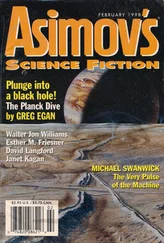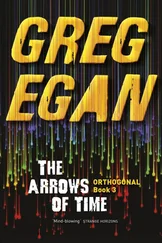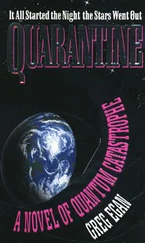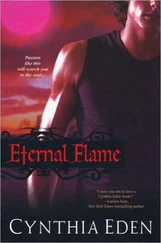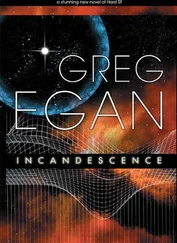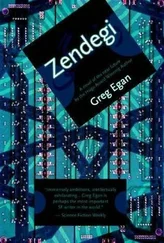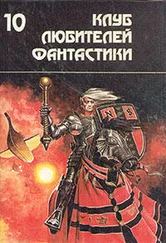Greg Egan - The Eternal Flame
Здесь есть возможность читать онлайн «Greg Egan - The Eternal Flame» весь текст электронной книги совершенно бесплатно (целиком полную версию без сокращений). В некоторых случаях можно слушать аудио, скачать через торрент в формате fb2 и присутствует краткое содержание. Жанр: Фантастика и фэнтези, на английском языке. Описание произведения, (предисловие) а так же отзывы посетителей доступны на портале библиотеки ЛибКат.
- Название:The Eternal Flame
- Автор:
- Жанр:
- Год:неизвестен
- ISBN:нет данных
- Рейтинг книги:4 / 5. Голосов: 1
-
Избранное:Добавить в избранное
- Отзывы:
-
Ваша оценка:
- 80
- 1
- 2
- 3
- 4
- 5
The Eternal Flame: краткое содержание, описание и аннотация
Предлагаем к чтению аннотацию, описание, краткое содержание или предисловие (зависит от того, что написал сам автор книги «The Eternal Flame»). Если вы не нашли необходимую информацию о книге — напишите в комментариях, мы постараемся отыскать её.
The Eternal Flame — читать онлайн бесплатно полную книгу (весь текст) целиком
Ниже представлен текст книги, разбитый по страницам. Система сохранения места последней прочитанной страницы, позволяет с удобством читать онлайн бесплатно книгу «The Eternal Flame», без необходимости каждый раз заново искать на чём Вы остановились. Поставьте закладку, и сможете в любой момент перейти на страницу, на которой закончили чтение.
Интервал:
Закладка:

The Future component of the product of one vector with the conjugate of another, v × w *, carries some useful geometric information about the two vectors:

The quantity on the right hand side of the first equation, where we multiply the four components ( a , b , c , d ) of v and ( A , B , C , D ) of w and add up the results, is known as the dot product of the two vectors. As the second equation shows, it depends only on their lengths and the angle between them.
Any rotation of four-dimensional space can be achieved by fixing two vectors whose length is one, say g and h , and then multiplying on the left with g and dividing on the right with h . So the vector v is rotated by:

For example, a rotation that swaps North and South and also Future and Past, while leaving all directions orthogonal to these unchanged, can be achieved by setting g = South and h = North.
How can we be sure that this operation really is a rotation? For a start, it’s easy to see that the length of v is unchanged, since | g |=| h |=| h -1|=1 and:

We can also look at what happens to the angle between two vectors when we perform the same operation on both of them, by looking at the effect on v × w *:
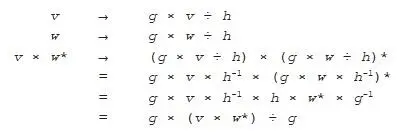
The Future component of v × w * is left unchanged by this operation, since g × Future ÷ g = Future. And since the Future component of v × w * determines the angle between v and w —along with their lengths, which we know are unchanged—that angle is also unchanged.
All rotations that involve only the three dimensions of space can be achieved by restricting the original formula to the case where h = g :

For example, rotating everything by half a turn in the horizontal (North-East) plane can be achieved by setting g = Up.
Two other particular kinds of rotation occur when we set h = Future, which amounts to simply multiplying on the left by g :

and when we set g = Future, which amounts to simply dividing on the right by h :

Both these operations will always rotate in two orthogonal planes simultaneously, and by exactly the same angle in both. For example, multiplying on the left by East will rotate by a quarter-turn in both the Future-East plane and the North-Up plane.
Consider a rotation specified by g and h that transforms vectors according to the usual formula:

There are two other kinds of geometrical objects that can be described by quaternions, but which are not vectors because they obey different transformation laws when the same rotation takes place:

These curious objects are known as “spinors”: l is a “left-handed spinor” and r is a “right-handed spinor”. In our own universe the mathematics of spinors isn’t quite as simple as it is in the universe of Orthogonal , but it’s very similar, and in both universes spinors play a crucial role in describing the way certain fundamental particles behave when they’re rotated.
Afterword
By the early years of the twentieth century, physicists had identified a variety of deeply puzzling phenomena—some naturally occurring, some the product of laboratory experiments—that could not be explained by the classical laws of mechanics, thermodynamics and electromagnetism. The spectrum of radiation emitted by an incandescently hot object made no sense: it should have contained an almost equal amount of energy at every possible frequency, but instead it tapered off rapidly as the frequency increased, a disparity known as the “ultraviolet catastrophe”. And while atoms had been shown to be composed of charged particles, both positive and negative, nobody could explain how they could be stable, or why the spectrum of hydrogen consisted of a set of sharply defined frequencies that followed a simple mathematical rule.
In the Orthogonal universe, because there is an upper limit on the frequency of light there is no ultraviolet catastrophe, and the spectrum predicted by classical physics is only slightly different from the true, quantum-mechanical version. And while the puzzle of the stability of charged matter remains, there is no direct equivalent to the hydrogen atom to serve as an elementary test bed for a new theory. What’s more, the simple electronics that lay behind many physics experiments during the birth of quantum theory in our universe is not available in the Orthogonal universe: the very nature of electromagnetism makes the generation of any appreciable, sustained electrostatic force on anything but a microscopic scale almost impossible.
Carla’s tarnished mirrors do have their closest match in one seminal experiment from the early days of quantum theory: the photoelectric effect. This phenomenon brought Nobel prizes in the 1920s to Albert Einstein for his theoretical work and Robert Millikan for his painstaking experiments—though Millikan appears to have been trying to refute the theory! The photoelectric effect refers to the release of electrons from a metal surface in a vacuum when the surface is struck by light of various frequencies; the electrons can be collected and their rate of ejection from the surface measured as a current flowing along a wire. The abrupt cessation of this photoelectric current when the frequency of the light striking the metal falls below a critical value supported the idea that light could only be absorbed and emitted in discrete amounts whose energy was proportional to the light’s frequency. Since it required a certain amount of energy to tear each electron away from the metal surface, unless each individual quantum of light, or photon, carried that minimum energy the light could not produce a current.
The Orthogonal version works somewhat differently: rather than absorbing light to gain energy, the surface is stimulated by the incoming light to radiate light itself, which is accompanied by the production of conventional energy. Also, more than one quantum of light is needed to bridge the energy gap between bound and free luxagens, since a smaller gap would make the material unstable.
With no electronics at her disposal, Carla can only observe the tarnishing itself, along with the scattering of light by the luxagens released into the vacuum. The unexpected way in which free luxagens interact with light echoes another landmark experiment in our universe, in which the X-rays scattered by free electrons in graphite were found by Arthur Compton to betray distinctively particle-like behavior.
Читать дальшеИнтервал:
Закладка:
Похожие книги на «The Eternal Flame»
Представляем Вашему вниманию похожие книги на «The Eternal Flame» списком для выбора. Мы отобрали схожую по названию и смыслу литературу в надежде предоставить читателям больше вариантов отыскать новые, интересные, ещё непрочитанные произведения.
Обсуждение, отзывы о книге «The Eternal Flame» и просто собственные мнения читателей. Оставьте ваши комментарии, напишите, что Вы думаете о произведении, его смысле или главных героях. Укажите что конкретно понравилось, а что нет, и почему Вы так считаете.

